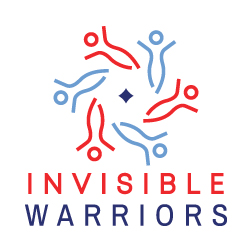
July 2023 Lunch and Learn
July 2023 Lunch and Learn
Suffering from a chronic illness, invisible disability, or autoimmune disorder and living in Huntsville, AL? You’re not alone.
On the 4th Tuesday of each month, join a local Invisible Warriors peer support group for a Lunch & Learn at The Curry in Huntsville. Be a part of this safe space where women feel loved and supported, valuable and worthwhile. We talk about all the things life throws us, but in a kind and uplifting way — never moaning and groaning.
Each month features a different special guest and discussions and training about living with chronic illnesses and autoimmune disorders. For our July Lunch and Learn, we welcome Jessy Mixon, founder of My Hope Healer. Here’s how she describes what you can expect at our July session:
I will speak about the energy behind emotions and physical illness and how it can impact us mentally.
“Life is better when you are happy, but life is best when other people are happy because of you! Be an inspiration!” Unknown
This is my mission! My goal is to educate highly-sensitive and neurodiverse clients on being energetically conscious and supporting them in balancing frequency and vibration to optimize their personal and professional lives and, in return, making my clients happy.
I have more than 15 years of experience in education, energy work, and coaching. Once I received my Master of Science in Psychology, I began to transition my career from the classroom into biofeedback, career, and mental health coaching. Throughout my journey, there have been inspirational people who encouraged, motivated, and connected with me. Therefore, I want to inspire my clients and assist them to become an inspiration through the work that they do.I am blessed with the opportunity to set obtainable goals with my clients, educate them, and give them support so they are successful in all aspects of life that aligns to their passion with purpose and, most important, that the client finds the joy that brings about hope and true happiness.
Seats are limited. To reserve your seat for the June Huntsville Lunch and Learn, click HERE.

Jessey Mixon
Want to know more about Invisible Warriors? Sign up for our newsletter to receive regular updates!
Or click the button below to schedule a meeting with Founder Nancy Becher!




